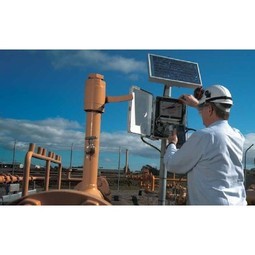Customer Company Size
Large Corporate
Region
- Europe
Country
- Ireland
Product
- ICONICS’ GENESIS64™
- AnalytiX®
Tech Stack
- Microsoft® SQL Server® 2008 R2
- SharePoint® 2010
Implementation Scale
- Enterprise-wide Deployment
Impact Metrics
- Environmental Impact Reduction
- Productivity Improvements
Technology Category
- Platform as a Service (PaaS) - Data Management Platforms
Applicable Industries
- Utilities
- Cities & Municipalities
Applicable Functions
- Facility Management
- Logistics & Transportation
Use Cases
- Water Utility Management
- Energy Management System
Services
- System Integration
- Software Design & Engineering Services
About The Customer
Cork County Council is the governing body for the largest county in Ireland, covering an area of 2,880 square miles, which is 11% of the Irish State. The council is responsible for treating and supplying water to approximately 40,000 non-domestic customers and 100,000 homes across the county. Due to its size, Cork County is divided into four zones– North, South, East, and West Cork. The average daily volume of water produced in Cork County is estimated to be well over 150,000 yd3 /day with the total length of water in the Public Water Supply Schemes estimated to be 3,500 miles long. The council was tasked with reducing energy consumption by 30% by 2020 as per a directive from the European Union (EU).
The Challenge
Cork County Council, the largest county in Ireland, was tasked with reducing energy consumption by 30% by 2020 as per a directive from the European Union (EU). The council treats and supplies water to approximately 40,000 non-domestic customers and 100,000 homes across the county. Due to its size, Cork County is divided into four zones– North, South, East, and West Cork–which makes data aggregation challenging. The council was using manual data entry with Excel to produce the leakage figures required by the Department of the Environment. However, with four zones to maintain, this method made it too difficult to efficiently calculate leakage figures. Furthermore, the average daily volume of water produced in Cork County is estimated to be well over 150,000 yd3 /day with the total length of water in the Public Water Supply Schemes estimated to be 3,500 miles long. The number of yards from which to retrieve that data continues to increase – approximately 391 DMAs with up to 3 yards per DMA. With such a vast supply network, the Council could not meet the new EU directives on energy consumption by continuing to use traditional manual data collection methods.
The Solution
Cork County Council partnered with Cully Automation Ltd. to install a number of Plant SCADA systems to control and monitor local stations. ICONICS’ GENESIS64™ and AnalytiX® products were deployed to convert the existing graphics that had been deployed on earlier GENESIS32™ projects, and connect directly to the SCADA data. The full integration was a seamless process, providing a true County-wide visualization solution leveraging Bing™ maps. From this single SharePoint® 2010 view, the Council can access charts and reports on the status of any meter from any District Metering Area (DMA) in the county. ICONICS products enabled the system to daily send data from each remote meter, to be read in the Historian and used for calculating the water usage for each DMA. By using a simple, intuitive point-and-click interface, an asset tree of DMAs was able to be quickly created and calculations added. By leveraging the latest Microsoft® SQL Server® 2008 R2 technologies including StreamInsight the collected data was then integrated together to produce an up-to-date and accurate DMA water usage figure.
Operational Impact
Quantitative Benefit

Case Study missing?
Start adding your own!
Register with your work email and create a new case study profile for your business.
Related Case Studies.

Case Study
Turning A Stadium Into A Smart Building
Honeywell created what it called the “intelligent system” for the National Stadium in Beijing, China, turning the venue for the opening and closing events at the 2008 Summer Olympics into a “smart building.” Designed by highly controversial artist Ai Weiwei, the “Bird’s Nest” remains one of the most impressive feats of stadium architecture in the world. The 250,000 square meter structure housed more than 100,000 athletes and spectators at a time. To accommodate such capacity, China turned to Honeywell’s EBI Integrated Building Management System to create an integrated “intelligent system” for improved building security, safety and energy efficiency.

Case Study
IoT Solutions for Smart City | Internet of Things Case Study
There were several challenges faced: It is challenging to build an appliance that can withstand a wide range of voltage fluctuations from as low at 90v to as high as 320v. Since the device would be installed in remote locations, its resilience was of paramount importance. The device would have to deal with poor network coverage and have the ability to store and re-transmit data if networks were not available, which is often the case in rural India. The device could store up to 30 days of data.

Case Study
Automation of the Oguz-Gabala-Baku water pipeline, Azerbaijan
The Oguz-Gabala-Baku water pipeline project dates back to plans from the 1970’s. Baku’s growth was historically driven by the booming oil industry and required the import of drinking water from outside of the city. Before the construction of the pipeline, some 60 percent of the city’s households received water for only a few hours daily. After completion of the project, 75 percent of the two million Baku residents are now served around the clock with potable water, based on World Health Organization (WHO) standards. The 262-kilometer pipeline requires no pumping station, but uses the altitude differences between the Caucasian mountains and the capital to supply 432,000 m³/d to the Ceyranbatan water reservoir. To the people of Baku, the pipeline is “the most important project not only in 2010, but of the last 20 years.”

Case Study
GPRS Mobile Network for Smart Metering
Around the world, the electricity supply industry is turning to ‘smart’ meters to lower costs, reduce emissions and improve the management of customer supplies. Smart meters collect detailed consumption information and using this feedback consumers can better understand their energy usage which in turn enables them to modify their consumption to save money and help to cut carbon emissions. A smart meter can be defined in many ways, but generally includes an element of two-way communication between the household meter and the utility provider to efficiently collect detailed energy usage data. Some implementations include consumer feedback beyond the energy bill to include online web data, SMS text messages or an information display in consumers’ premises. Providing a cost-effective, reliable communications mechanism is one of the most challenging aspects of a smart meter implementation. In New Zealand, the utilities have embraced smart metering and designed cost effective ways for it to be implemented. The New Zealand government has encouraged such a move to smart metering by ensuring the energy legislation is consistent with the delivery of benefits to the consumer while allowing innovation in this area. On the ground, AMS is a leader in the deployment of smart metering and associated services. Several of New Zealand’s energy retailers were looking for smart metering services for their residential and small business customers which will eventually account for over 500,000 meters when the multi-year national deployment program is concluded. To respond to these requirements, AMS needed to put together a solution that included data communications between each meter and the central data collection point and the solution proposed by Vodafone satisfied that requirement.
.png)
Case Study
Smart Street Light Network (Copenhagen)
Key stakeholders are taking a comprehensive approach to rethinking smart city innovation. City leaders have collaborated through partnerships involving government, research institutions and solution providers. The Copenhagen Solutions Lab is one of the leading organizations at the forefront of this movement. By bringing together manufacturers with municipal buyers, the Copenhagen Solutions Lab has catalyzed the development and deployment of next-generation smart city innovations. Copenhagen is leveraging this unique approach to accelerate the implementation of smart city solutions. One of the primary focus areas is LED street lighting.

Case Study
NB-IoT connected smart meters to improve gas metering in Shenzhen
Shenzhen Gas has a large fleet of existing gas meters, which are installed in a variety of hard to reach locations, such as indoors and underground, meaning that existing communications networks have struggled to maintain connectivity with all meters. The meter success rate is low, data transmissions are so far unstable and power consumption is too high. Against this background, Shenzhen Gas, China Telecom, Huawei, and Goldcard have jointly trialed NB-IoT gas meters to try and solve some of the challenges that the industry faces with today’s smart gas meters.






